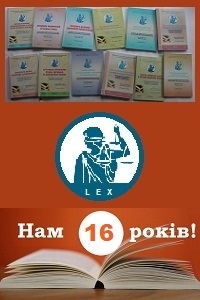The war in Ukraine makes significant adjustments to the work of the forest industry. Practically from the first days of the invasion, there was a huge need for wood both for the defense sector, in particular for the construction of defense fortifications, and for other needs related to the difficult energy situation in our country. One of the principles of sustainable forest management is the provision of rational, environmentally safe and resource-saving forest use, which is manifested in the reasonable use of the forest area to obtain one or more types of forest resources.
Article 6 of the Forest Code of Ukraine defines that forest resources are wood, technical, medicinal and other forest products that are used to satisfy the needs of people and production and are reproduced in the process of forming forest natural complexes. Forest resources also include the beneficial properties of forests (the ability of forests to reduce the negative consequences of natural phenomena, protect soils from erosion, prevent environmental pollution and clean it, contribute to regulating water flow, improving the health of the population and its aesthetic education, etc.), which are used to satisfy public needs [1]. As it is seen, the list of types of forest resources is not exhaustive, as are the methods of their use, but the main feature of this type of natural resource is that it is renewable, and therefore a "permanent" alternative source of energy.
However, the use of forest resources in our region is imperfect. Up to 18% is logging waste. The trends in the development of the forest industry are such that, as a result of international agreements on combating climate change, the competitiveness of wood as an energy source is expected to increase. The forests of Ukraine annually provide a significant increase in wood, the use of which as biofuel is becoming promising, and in view of the war in Ukraine, the use of wood waste as an alternative source of energy in general is becoming more and more a priority among renewable energy sources.
Wood biomass accounts for more than 17% of the energy potential of biomass. Wood biomass is wood waste generated in the process of its technological processing, starting from logging operations to the production of the final consumer product. Wood biomass includes wood waste, bark waste, tree green waste, and seed waste.
Waste can be lumpy (e.g. firewood), loose (e.g. technological chips) or soft (e.g. machine shavings, sawdust, wood waste). Some wood waste can be used without additional technological processing, and some should be processed into technological wood chips with the help of crushing machines, and then burned or used for the production of fuel briquettes.
In many countries, wood processing waste is used to obtain energy, since the thermal output of fuel obtained from wood biomass is fully consistent with traditional fuel, for example, one ton of coal can be replaced by 4.2 cubic meters of coal. m. of such waste. One of the methods of utilization of wood biomass is direct burning for the purpose of obtaining energy. The significant advantages of wood fuel are its ecological purity: wood does not contain sulfur, chlorine and other elements harmful to the atmosphere. On the other hand, unused wood biomass poses a danger to the natural environment because, when decomposed, it releases methane into the air, pollutes rivers and kills flora and fauna. When using wood biomass for energy production, additional sources of money savings arise, since wood waste is located practically at the place of its consumption and does not require costs for its transportation [2]. For example, the Koryukivska TPP in Chernihiv Oblast, a 4 MW plant produces electricity from biomass, namely wood chips. This TPP annually releases about 25 million kWh into the power grid. of electricity, which significantly improves the energy balance of the entire region [3], which is extremely important in the conditions of the energy crisis of our country during the war.
Wood fuel itself, as an energy resource, has great potential in this direction, because this type of fuel is, firstly, renewable, secondly, economically beneficial, thirdly, when burning wood, 90% of harmless gas is formed, which does not threatens the life and health of a person as well as the surrounding natural environment as a whole, and during wartime processing of wood waste also solves the problem of providing the population with inexpensive energy carriers.
References:
1. Forest Code of Ukraine of January 21, 1994, edited on February 8, 2006. № 3852-XII. List of the Verkhovna Rada of Ukraine. 2006. № 21. Art.170.
2. Wood processing. "Vinnytsia forestry" branch: website. URL: https://vinlisgosp.com.ua/areasofactivity/pererobka-derevyny (access date: 07/07/2023)
3. How wood waste turns into kilowatts: a report from the Koryukiv TPP: website. URL: https://expro.com.ua/statti/yak-derevn-vdhodi-peretvoryuyutsya-v-klovati-reportaj-z-koryukvsko-tes (access date: 07/07/2023)
Дослідження здійснене в межах виконання проекту «Альтернативна енергетика в Україні: шляхи системного законодавчого стимулювання» за фінансової підтримки Національного фонду досліджень України (Договір про виконання наукового дослідження і розробки за рахунок грантової підтримки 74/0360 від 01.05.2023)
|









